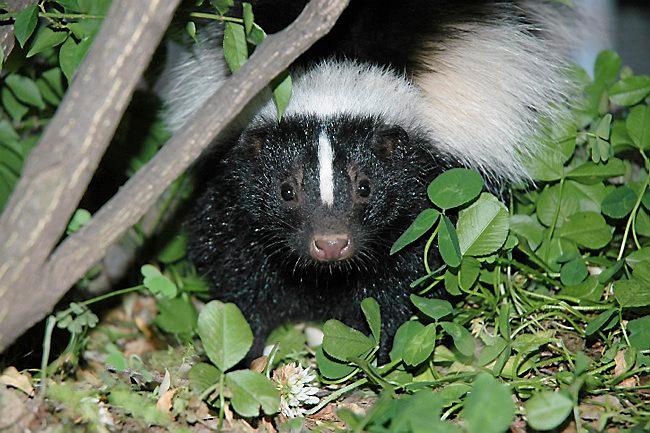
Minnesota seeing uptick in reported rabies cases, health officials say
Rabid skunks and cattle have the Minnesota Department of Health urging area residents to vaccinate their pets, horses and cattle against rabies this summer.
Southern Minnesota counties are reporting an uptick in cases of rabies, with rabid skunks — including three in Pipestone County and one each in Nobles and Murray counties — and cattle — two in Rock County and one in Pipestone County — documented so far in 2024.
The rabies cases appear to be confined to the far southwest corner of Minnesota, with an incident also reported in Stearns County. There, three beef steers tested positive for rabies in mid-May after apparent skunk bites, according to reports from MDH and the Minnesota Board of Animal Health.
MDH epidemiologist Carrie Klumb said there has been an unusually high number of rabid animals so far this year in Minnesota, including 14 bats, 12 skunks, six cows and one cat. In a typical year, she said the state may record three to five cases of rabid skunks and zero to one rabid cows.
What makes this year so unusual?
“We don’t know exactly why this is happening,” Klumb said. “We had a really mild winter. We think that might have allowed more of the skunk population to survive and interact and spread rabies.”
In Minnesota, skunks are one of the main reservoirs for rabies, she said, noting that southern Indiana is also seeing an uptick in rabies cases spread from infected skunks this year.
With the unusually high number of rabies cases reported in animals, there is a corresponding high number of humans who have had to be treated for likely or possible exposure to rabies.
As of late July, there were 17 instances in which people needed to get the series of four rabies shots. That’s because they were either bitten by a rabid animal or were exposed to the animal’s saliva through close contact, such as while administering medication.
“You do need to have a break in the skin where the virus gets into the body,” said Klumb. “Where we have cattle (infected), we are being very conservative.”
If a producer sticks their hand inside an infected animal’s mouth, just having lots of saliva exposure would lead MDH to recommend they get the rabies shot.
While that scenario may be unusual, Klumb said the most common way to get rabies from an animal is through a bite. And, if that happens, a person should call their health care provider or the MDH help line at 651-201-5414 for a risk assessment.
If the animal that caused the bite wound is wild and is not captured, the recommendation is to start the series of shots. If it is a known animal, such as a dog, cat or livestock species, Klumb recommends confining the animal for 10 days and watching for any abnormal behavior.
The only way to truly know if the animal has rabies is to test its brain.
Of course, avoiding exposure to rabid animals is best, which is why MDH is encouraging pet owners, as well as owners of horses and cattle, to vaccinate their animals for rabies.
“We want them to vaccinate their dogs and cats against rabies; vaccinate horses, vaccinate cattle,” Klumb said. “We know that’s not always possible if you have a large herd, but we are seeing more activity in skunks.”
Klumb also encourages the public to leave wild animals alone, and if you see a nocturnal animal out in the daytime, to understand that they might be sick and you should stay away from them and keep your animals inside.
Related Articles
Ramsey County, St. Paul retirees among those pinched by HealthPartners-UnitedHealthcare dispute
Q&A: Minnesota’s first Humanistic rabbi on God, justice and human responsibility
Minnesota suicide rates dropped in 2023, according to health department
KARE 11’s Boyd Huppert to undergo cutting-edge T-cell procedure in his ongoing blood cancer battle
Minnesota Supreme Court vacates murder conviction in 2021 ‘assassin-like’ homicide

